Wednesday, 27/06/2012: Georgetown – Shell Beach
We had to leave before breakfast time at the hotel, so we had an early riser’s breakfast brought up to our room the evening before. We nibbled our sandwiches and fruit without enthusiasm before checking out in the morning. The receptionist told us that her colleague’s name was also Maren and that she was already looking forward to meeting us on our return to Cara Lodge in a couple of days time. Dennis was already waiting for us and took us straight to Ogle airport. Fortunately, the traffic isn’t too bad at this time of day, so we got there very quickly. He realised that we had way too much baggage for the official allowance, although we had left one bag at Cara Lodge with all the things we wouldn’t need. There was a risk that our excess weight might be refused. As he had at one time worked at the airport, Dennis strode up to the check-in counter and told the staff that we were on a very important mission to study the turtles at Shell Beach and that we definitely needed all our equipment. No worries they said, as long as we pay for the extra baggage. We then had to go back to the airport’s “main building” where we had to state where we were going and where we would be staying. After that we just had to sit and wait for our Trans Guyana Airways flight (http://transguyana.net), which left a bit later than expected. We flew in a Cessna Caravan again, so we made sure that we boarded first in order to get the seats behind the pilot. This time we actually had two pilots; one was a young trainee. We took off and flew over the sea, where we could even see circling frigate birds underneath us.
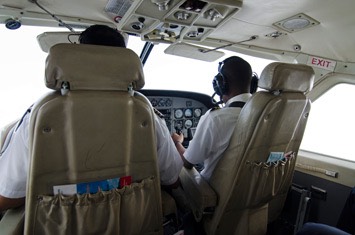
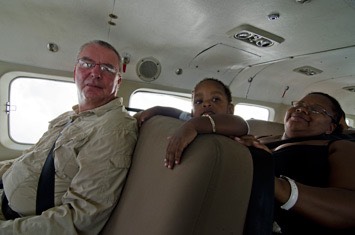
Off we went towards the west, and soon we flew over an endless expanse of rainforest. The flight took around one hour and during that time most of what we saw was forest, occasionally dissected by rivers.
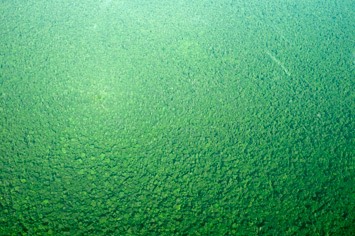
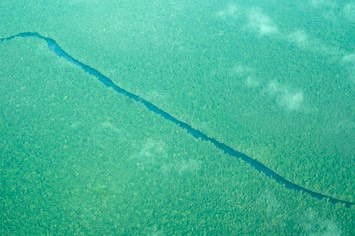
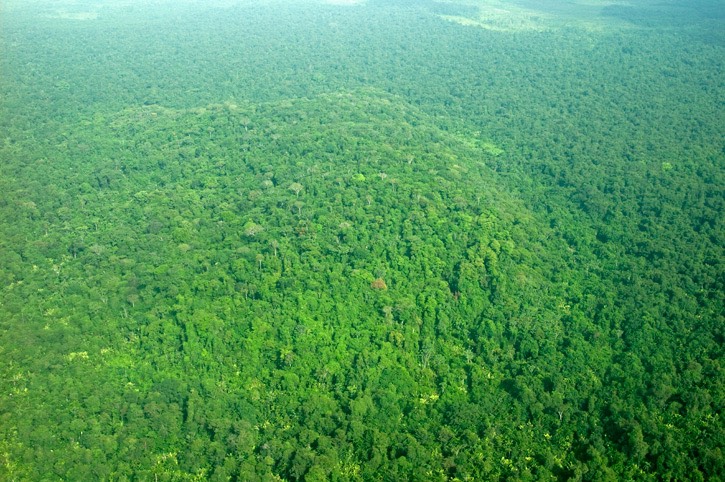
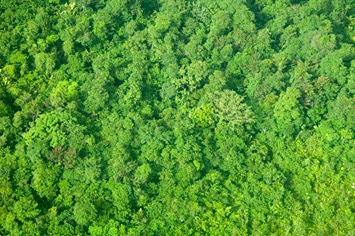
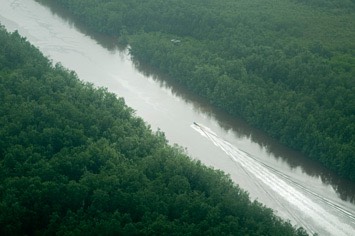
When we approached Mabaruma, it started raining and as we flew over the little town, the windows of the plane were all wet. We touched down on a little dirt runway and miraculously the rain stopped immediately!
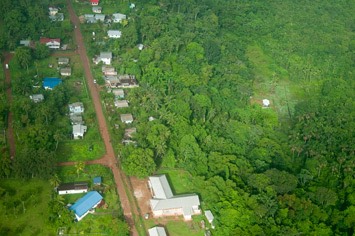
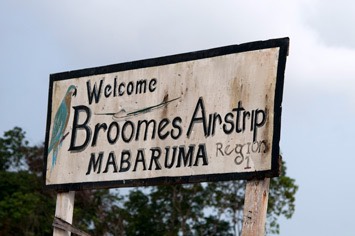
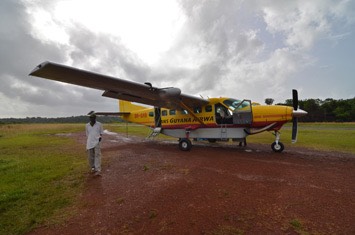
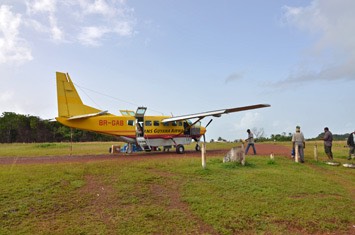
When we got off the plane, we
were immediately welcomed by Audley and Steve, our host and driver. Audley told us that we couldn’t
leave for Shell Beach straight away, as the tide wasn’t right. As he still had
some business to do in Mabaruma, Steve took us on a small drive around the
area, while the rain set in again. We drove past little wooden houses nestling
among lush vegetation and saw lots of schoolchildren walking through the rain
to their schools. We had some good views across a valley, but really we wanted
to get to Shell Beach!
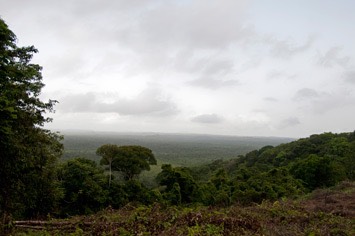
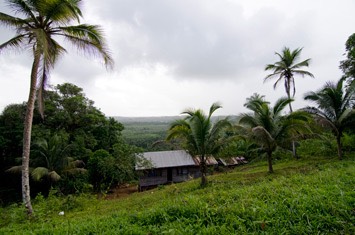
After about an hour Steve
took us to a small village (the name of which we never quite caught), where he
dropped us off at a small landing on the river where many other people were waiting
for boats. Our bags were piled into a small boat straight away and then we were
left to our own devices. At some point Audley appeared briefly and mumbled
something about “one more hour”, before he was gone again. Occasionally
somebody would arrive and load more bags and boxes with food into our boat,
before disappearing again. We were not quite sure what was going on, so we
decided to have a little look around the village. It was quite a busy place
with several shops, but the dirt roads were all very muddy from the recent
rains.
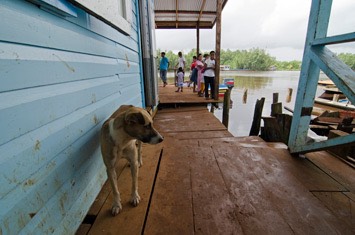
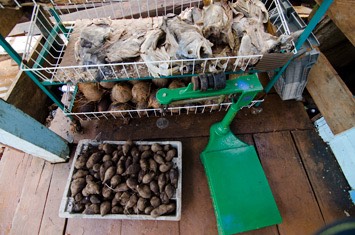
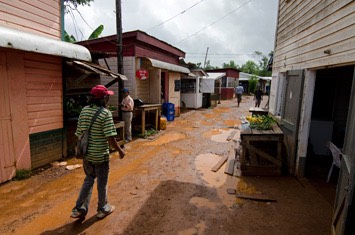
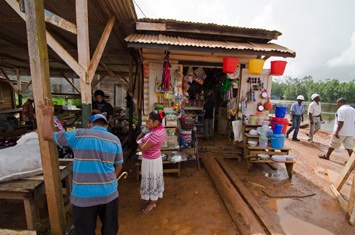
We spent quite a bit of
time watching a pile-driving operation on the river’s edge, where a long pole
hanging from a crane was repeatedly dropped in order to drive it into the muddy
ground! At one point we watched with horror as a bloke climbed up to the top of
the crane’s jib like a monkey! He didn’t wear a hard hat (of course!), never
mind any safety line to stop him falling from the great height. Obviously,
Health and Safety hasn’t quite reached here… We returned to the little landing,
where we watched several other boats, including some dugout canoes, come and
go. One carried a large family of Amerindians, who were all really tiny people.
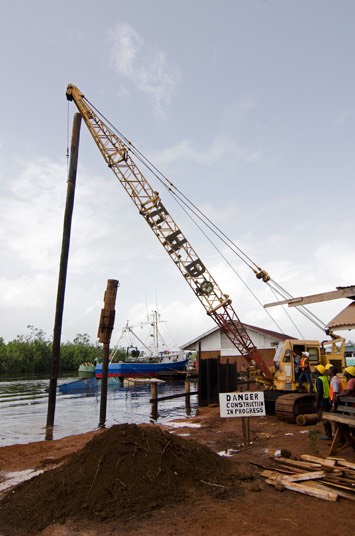
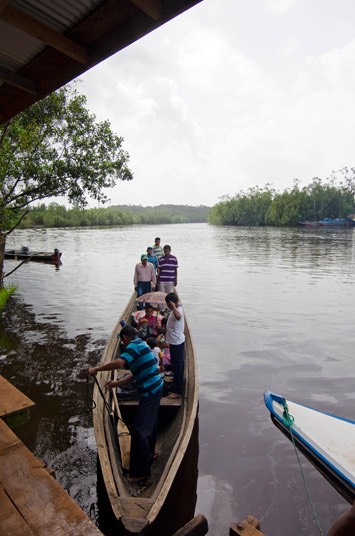
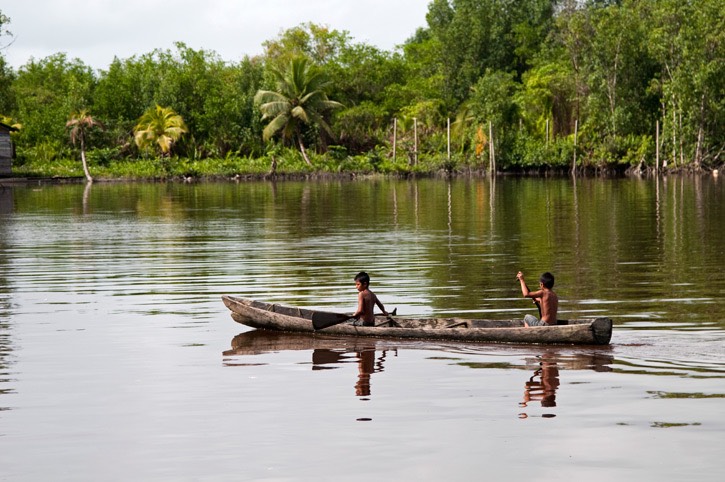
Our vessel was a long,
narrow wooden boat, with a powerful outboard engine, so once we got clear of
the landing, Audley brought the boat onto the plane and we sped off down river.
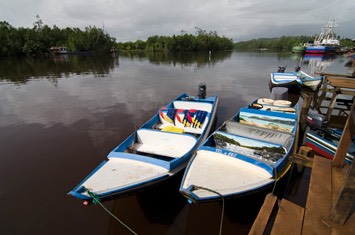
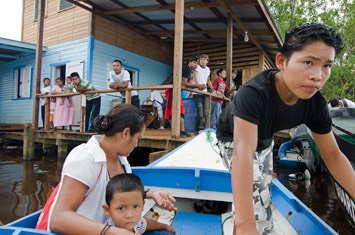
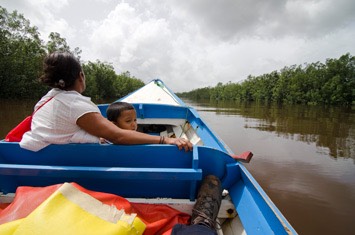
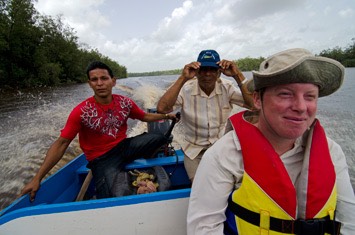
The rivers in this area are
the main highways that people use for transport and most villages are built
right next to the water’s edge. Many houses are built on wooden stilts, so that
they don’t get flooded should the river rise.
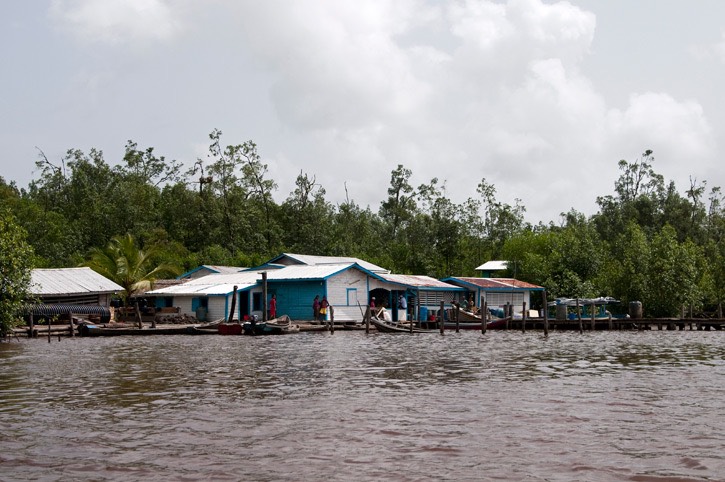
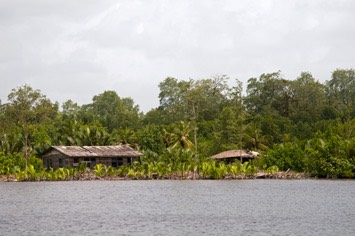
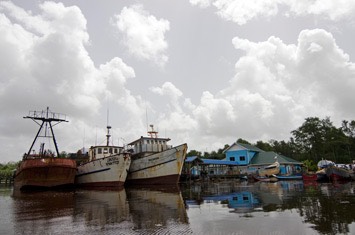
We went along the Arouka
and Waini Rivers, and we actually managed to see a few scarlet ibis on the way.
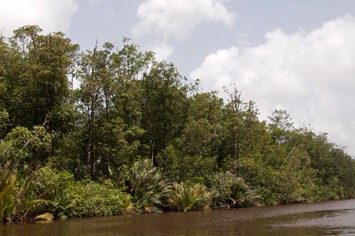
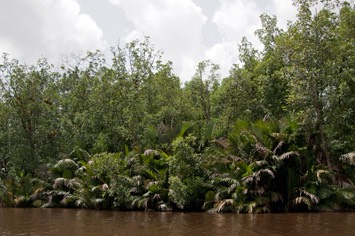
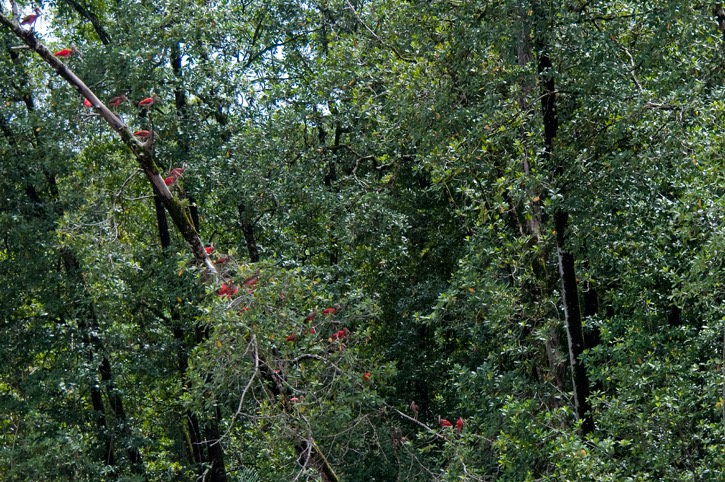
After about an hour we reached the mouth of the river, where there was a camp on the beach and a funky-looking ship heading towards the sea. We were told that these were fuel smugglers from Venezuela, who supply this part of Guyana with cheaper fuel! For another half an hour we motored at a slower pace on the sea, which was quite choppy.
When we arrived at Shell
Beach, Audley hollered to some guys sitting on the shore, and within a few
minutes a whole bunch of helpers arrived, all laying out poles from the water’s
edge to a little boat shed on the top of the beach. Audley then drove the boat
up onto the poles until we ground to a halt and we could all jump out. A good
dozen blokes then used all their muscle power to heave the boat up the last few
metres and into the shed.
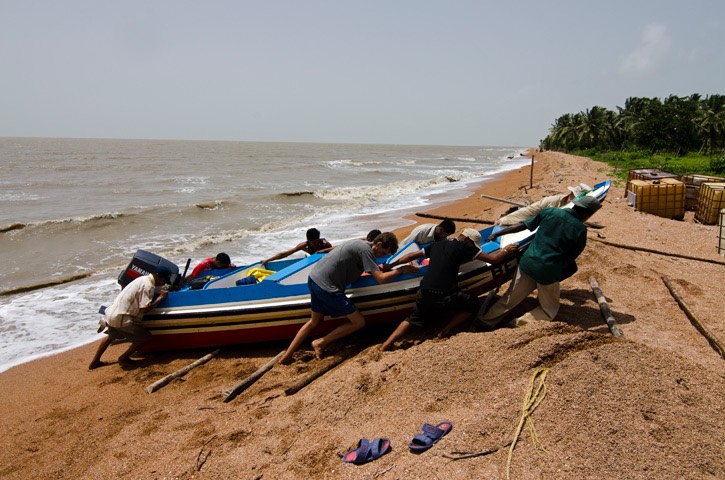
Shell Beach is home to the Guyana Marine Turtle Conservation Society’s project (www.gmtcs.org). Quite a few people live in the little settlement: Audley and his family as well as around six guys who all work on the turtle conservation project. Further down the beach there are several more families, and apparently there are a total of around 200 Amerindian people living in the area. One of the volunteers was Max from Germany, who helped us carry our bags to the guesthouse. The wooden guesthouse, raised up on stilts, has three rooms, which all have open sides and even open doorways. At the time of our visit, there was only a communal shower and toilet quite a long way away from the guesthouse, but apparently there are plans to build a new washhouse directly next to it.
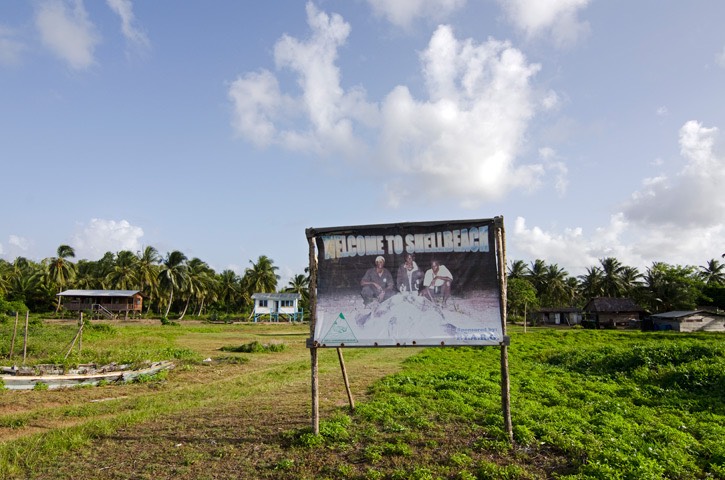
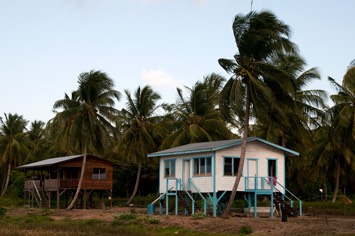
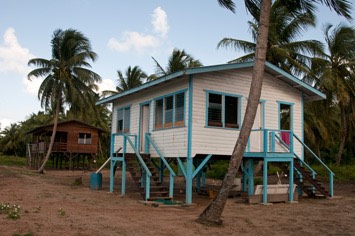
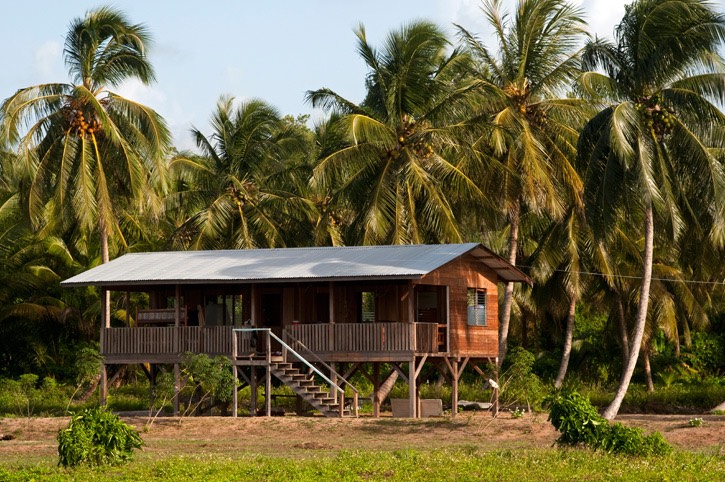
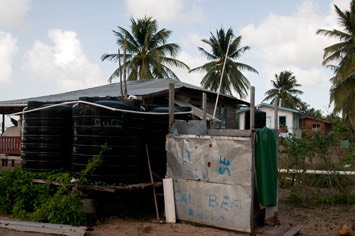
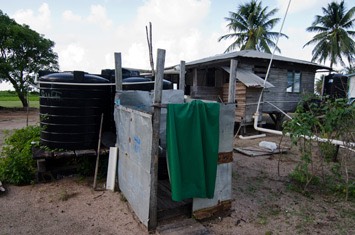
As soon as we arrived we
were served lunch, which had been prepared by Audley’s daughter, and a little
while later the other guys joined us too.
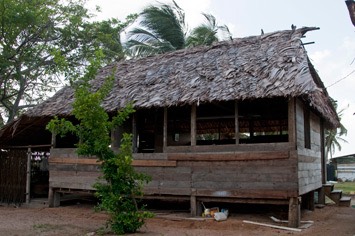
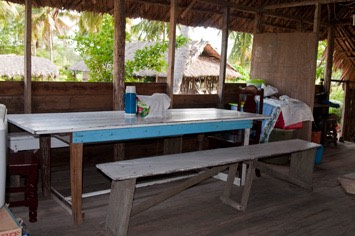
There didn’t seem to be any programme for the afternoon, so we had a siesta and then went for a short walk on the beach. Shell Beach definitely deserves its name – it consists entirely of tiny shell fragments! We were rather surprised that this was a beach where turtles nest, as it seemed to be surprisingly narrow and steep.
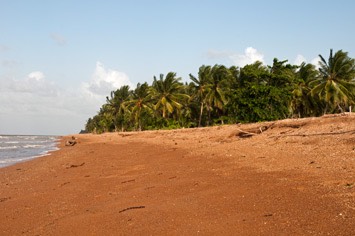
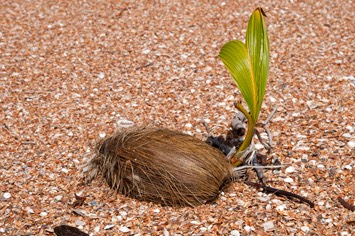
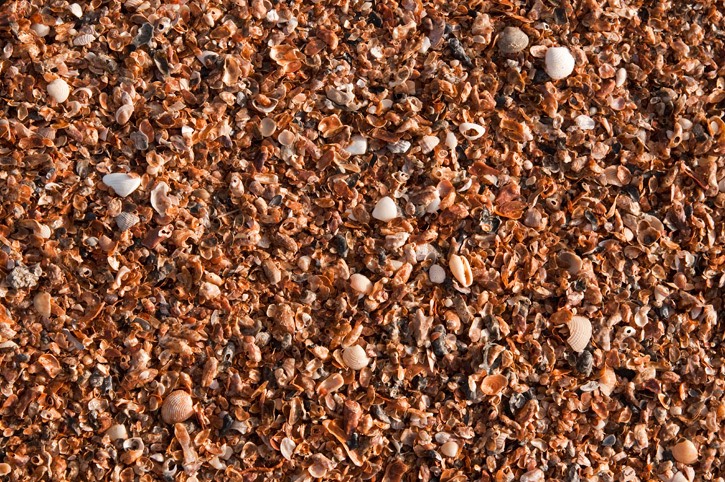
Not quite knowing what the programme would be, we returned to the guesthouse and relaxed on the elevated porch. At some point we saw one of the blokes go into the neighbouring house, where all the guys stayed. He carried a huge cutlass (the Caribbean term for a machete) and shortly after lots of screaming and shouting ensued. People came running from all over the place, all of them rushing into the building where the ruckus continued. After a while everybody walked out again and calm returned. We never figured out quite what it was all about, but the idea of a cutlass-yielding bloke with a grudge didn’t seem like a terribly good prospect…
Dinner was served just before it got dark. Despite putting on lots of mosquito repellent, we were mercilessly attacked by large, evil blood-sucking critters! On Shell Beach you don’t get malaria-carrying mosquitoes, but these guys just bite you right through your clothes. We started getting rather restless, but there was no escape, as all buildings had open sides. We were told that we would be taken on a quad bike to the stretch of beach a few kilometres down that would be surveyed on foot for turtles, but not until 21:00 hours. That meant that we somehow had to kill nearly three hours. And what do you do in three hours, when you under constant mosquito attack?? We decided to hide in bed under our mosquito net, but even that didn’t really work. The worst part was emerging to go to the toilet. Baring any part of your body to the elements meant certain attack by at least a million mosquitoes!
So we were greatly relieved when we were picked up and we headed to the beach, where the mosquito plague temporarily stopped. We went out with two of the local turtle wardens, both of whom were called Ryan. One of the Ryans had already dropped the other one off on the beach and came back to collect us. We both sat on the back of the quad bike, dangling our legs and feet over the sides. At less than 10 km/hour, our progress was slow, and we also briefly stopped at some fisherman’s hut. By the time we arrived at the starting point of our nocturnal walk, our backsides were rather battered. We had a short rest on the beach and then headed off east. Most of the time we stuck to higher ground, where there was a mat of vegetation that made walking sometimes quite difficult. The Ryan in the lead had a torch, but actually it was easier to rely on our night vision. We scrambled along for about an hour, before having another extended break on the beach, where we watched the amazing night sky full of stars and listened to the waves roll onto the beach. We kept our eyes open for any movement on the beach suggesting the arrival of a turtle, but alas, nothing. We were told right at the beginning that it was coming to the end of the turtle-nesting season and that sightings were no longer guaranteed. The walk back to the quad bike still didn’t get us any closer to our first turtle sighting on shore. As the two Ryans both wanted to get back, we managed to squeeze all four of us onto the little quad bike! It was an even less comfortable ride than the on the way out, but our discomfort was forgotten when suddenly the huge shape of a leatherback turtle (Dermochelys coriacea) on the beach loomed out of the dark! We all jumped off and the two Ryans started their routine documentation of the turtles they encounter. They measured the great reptile’s carapace, which came to a length of 1.4 m, and fitted a numbered tag to one of her flippers.
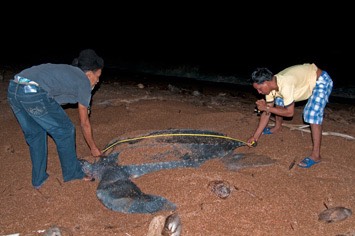
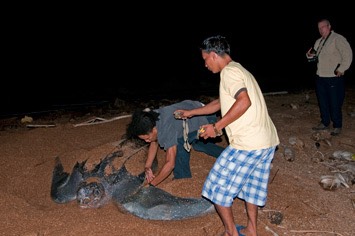
The turtle had already
finished laying her eggs and was now only covering everything up with sand, so
we were allowed to get up close and personal and even touch her.
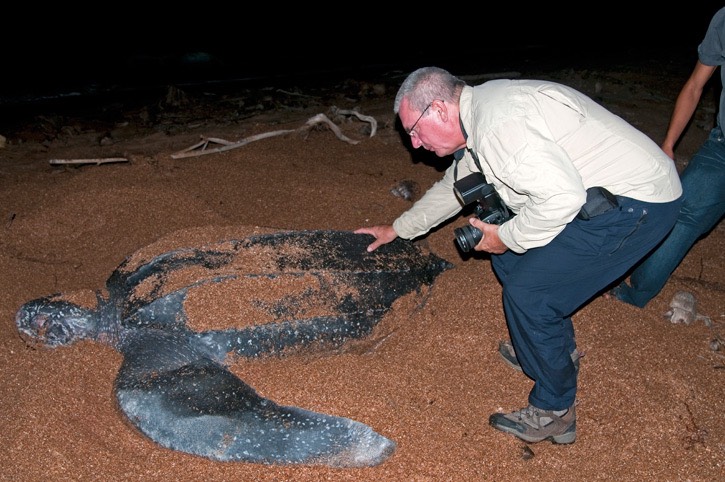
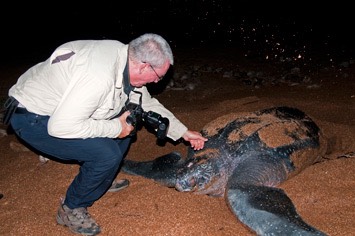
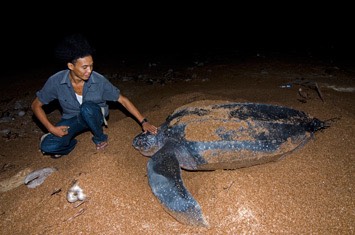
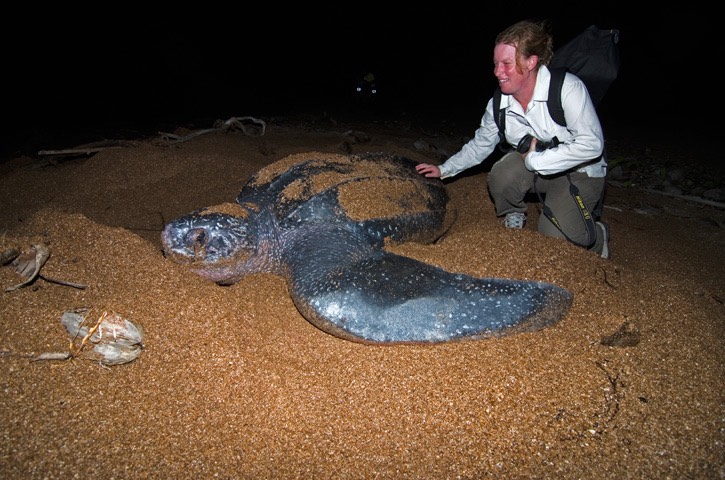
After a while the turtle was obviously satisfied that her eggs were covered well enough, so she headed back towards the sea. We were told to switch our torches off, which we shone on her back to have something to focus the cameras on, as the turtles need to be able to see the white of the breaking waves to get a bearing as to where the sea is. She lumbered off into the sea, and within a few moments she was gone, as if she’d never been there. Totally elated we climbed back on the quad bike and slowly made our way back to the research station. It was a great feeling to have found a turtle after all, as that was the one reason for going to Shell Beach.
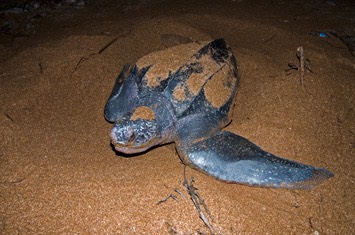
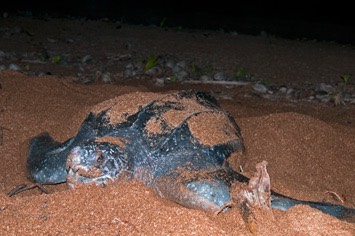
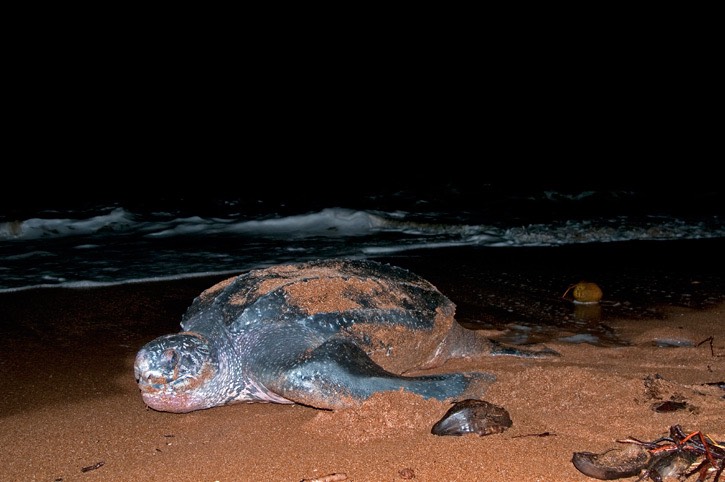
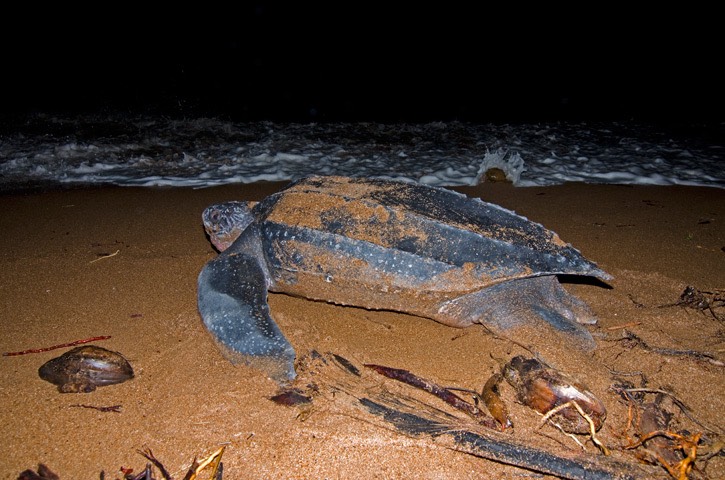
It was around midnight when we came back, and, after a very quick pee (cut short by the voracious mosquitoes), we jumped into bed. The night was torture though, as it was very hot, and lots of evil bloodsuckers had found their way under our mosquito net and we didn’t manage to eliminate them all before going to sleep. The night was, therefore, a rather unsettled one.
Thursday, 28/06/2012: Shell Beach
As all the action at Shell Beach
takes place at night, nobody seems to get up terribly early. We had a bit of a
lie-in and a leisurely breakfast. Audley then suggested that we should go for a
walk along the beach and look for the scarlet ibis. The task of guide fell to
George, who didn’t seem to be exactly thrilled. He carried a big cutlass, and
we thought that he was probably the one causing all the commotion the day
before. Was there a plan to get rid of us? George strode ahead and couldn’t
quite understand that we wanted to go slowly and stop to look at things. At
times he was a couple of hundred metres ahead of us.
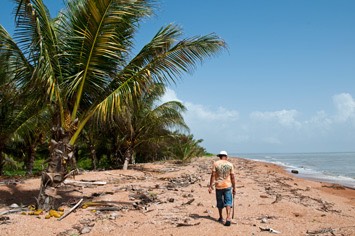
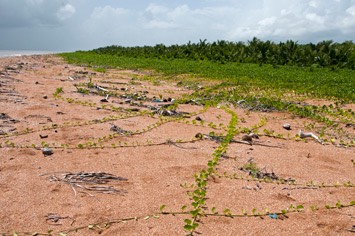
We came past the little wooden house of Arnold, who is one of the guys working with the turtles. He offered us fresh coconut juice, and went off to cut two fruits from the palms, slicing the tops off with a couple of deft slashes with his cutlass. The juice was deliciously refreshing. Suitably invigorated, we continued along the beach. Next stop was the house where George’s parents lived, so we called in and met them briefly.
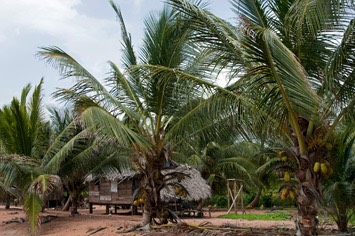
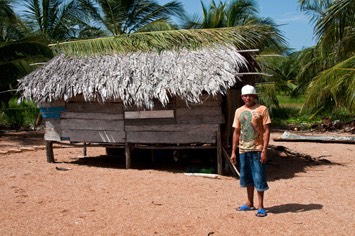
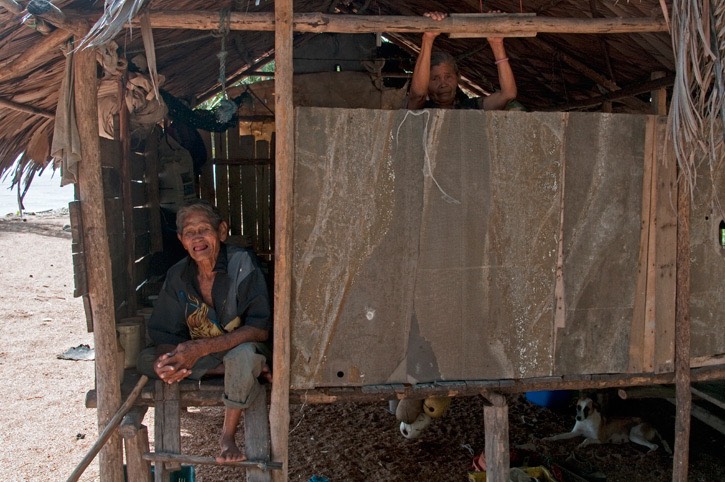

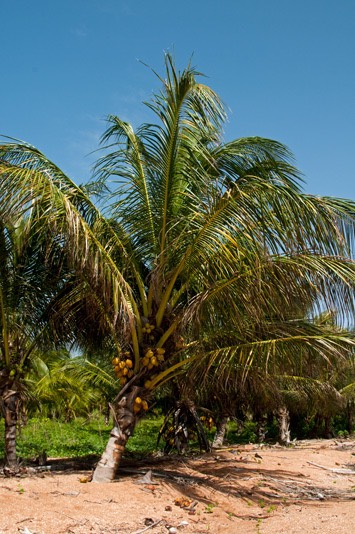
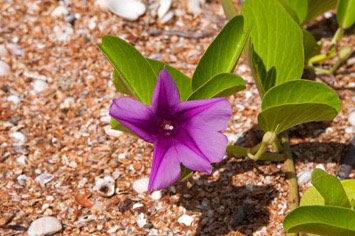
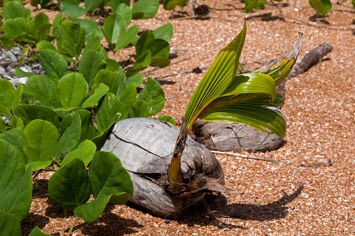
Along the beach we recognised several places where turtles had laid their eggs and covered them up again, although George thought that some of those clutches had been dug up again by people. The guys are all working hard to educate their neighbours about the need to leave the turtles’ eggs alone, and apparently they are quite successful in conveying the message.
After a while we could see the forest and mangroves, which are close to the mouth of the river, but by then it had got very hot and there were also very dark, threatening clouds brewing up on the horizon. We decided to give the scarlet ibis a miss, as we would otherwise have to go on for quite a while longer. The way back turned out to be a race against the gathering rain clouds. We managed to get to Arnold’s house before it started to rain. There we had a choice either to continue back to the research station or wait until the rain was over. We decided to continue, and assumed that it would only rain lightly. Wrong! Within minutes we were completely soaked, as the wind drove torrential rain straight into our faces, so that it really stung! By the time we got back, the rain had pretty much stopped again… At least that meant we could hang our wet clothes out on the washing line.
After a short break we had lunch and then an extended siesta. We didn’t really do much in the afternoon, other than have a look at the maps of the tracks of turtles that had been tagged on Shell Beach. Most of the leatherback turtles seemed to have headed north towards the Caribbean.
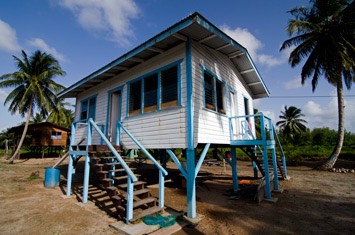
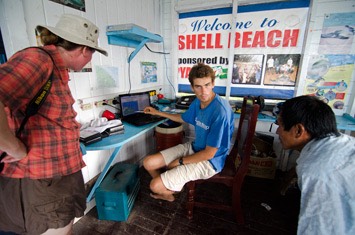
We also had another look around the research station and took a few more photos of the grounds, the kitchen, Audley and his daughter.
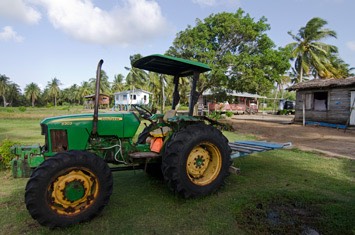
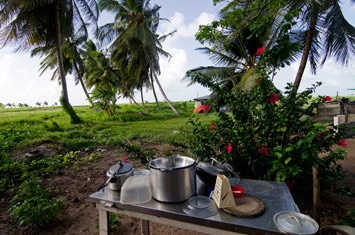

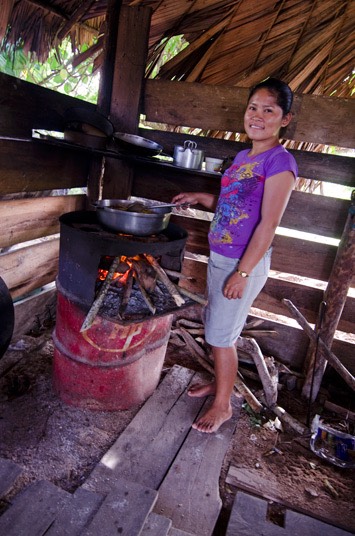
We took the opportunity to take a closer look at the hatchery, where all turtle clutches that had been removed from unsafe nests on the beach, were buried. It had the look of a graveyard, but actually it was just the opposite - a birthyard! Every stick was marked with the turtle species that had laid the eggs, the number of eggs and the date when they were buried. This allows the researchers to anticipate when another clutch of baby turtles is going to hatch.
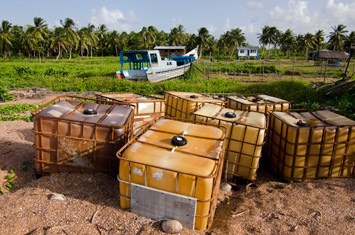
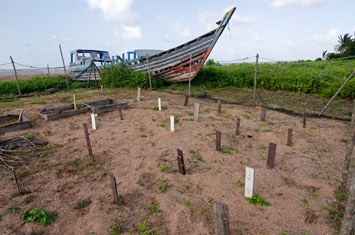
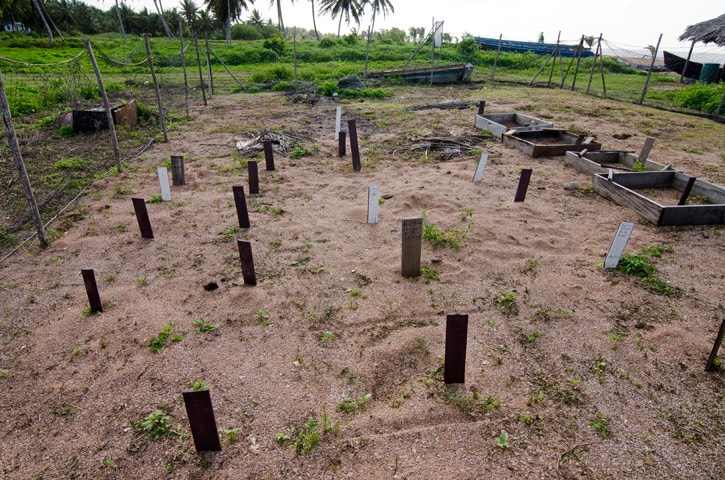
At dinner the nocturnal mosquito torture started all over again. This time we had drenched ourselves and our clothes in repellent, but again to little effect. All through the meal and our conversation with Audley afterwards, we kept slapping at mosquitoes flying around us – too late in most cases! Audley told us more about the turtle-monitoring project and that he had officially handed over to his son, Romeo, who was in Georgetown during our stay at Shell Beach. Nevertheless, whenever possible, 74-year old Audley still joins the beach patrols. He really is an amazing guy and has achieved a lot for turtle conservation in Guyana. One of the surprising things we learned is that the research station gets physically moved every few years, when all the buildings are dismantled and re-erected a few kilometres further down the beach. This follows the Amerindian tradition of moving their homesteads to minimise their environmental impact.
It is actually not possible to describe in appropriate words the mosquito torture we experienced at Shell Beach. We’ve travelled a lot over the years, but this was the worst in terms of blood-sucking insects that we have ever experienced! Fortunately, the bites weren’t too itchy, but the red dots lasted for days and we looked as though we were recovering from chicken pox. We were, therefore, very glad when we saw Max and Arnold, who were going to be our turtle guides for the night, head off on the quad bike. Max was back in record time to pick us up and it turned out that he had dropped Arnold off on the stretch of beach where we had found the leatherback turtle the previous night. We started our walk at the same place, right next to a hauled out wooden fishing boat. Walking down, the beach turned out to be just as quiet as the night before, but as we had seen our turtle the previous day, it didn’t really matter. Sitting on the beach and looking at the myriads of stars in the sky was a wonderful spectacle in itself.
On the way back Max decided to walk much faster, so that he could actually make it home on foot, while we walked slowly back to the quad bike and then drove the last bit home. Not long after we lost sight of him, we caught up with Max again, as he had come across a leatherback on the beach. He thought that she had nested already, so quickly tried to get all the measurements and tag the animal. After all this had been done, we waited to see the turtle disappear into the sea again, but it turned out that she actually hadn’t laid her eggs yet and was looking for a good spot to dig a hole. As this process can take anything from 30 minutes to several hours, Max decided to continue along the beach, while we stayed behind with Arnold. In the time between coming ashore and laying their eggs, turtles are easily disturbed, so we sat down quietly and watched the whole spectacle from a bit of a distance. The hind flippers of leatherback turtles are actually quite large, but nevertheless, the turtles are able to use them with great precision to excavate narrow but deep holes and throw the sand away to the sides.
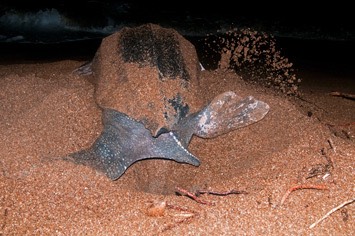
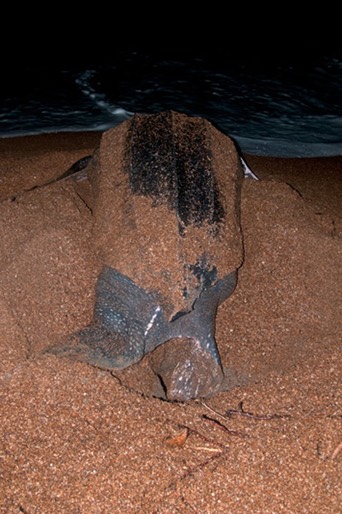
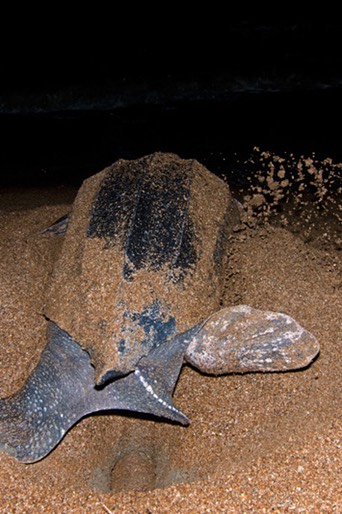
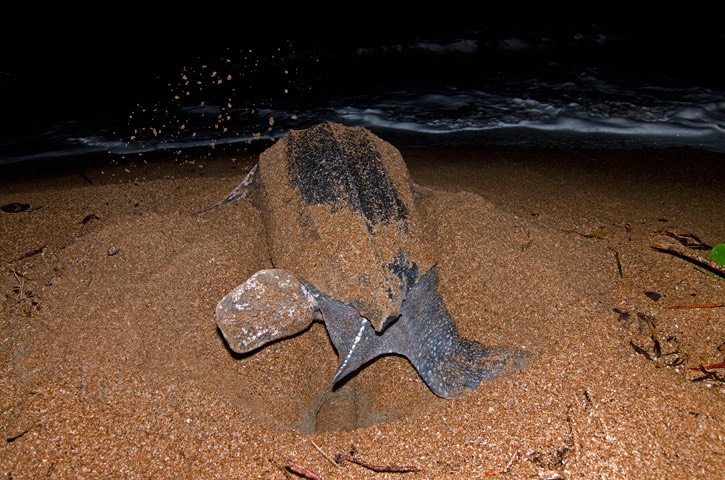
Unfortunately, the turtle
hadn’t decided on a very good place to dig her nest; even while she was still
working on it, the sea lapped around her head. As the tide was still fairly
low, her clutch would be in danger of being exposed as the sand got eroded away
at high water, so Arnold decided to collect the eggs in order to bury them
again at the hatchery at the research station.
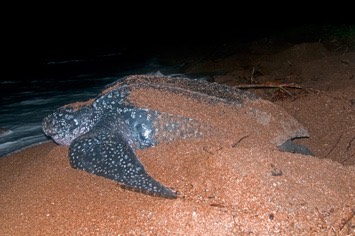
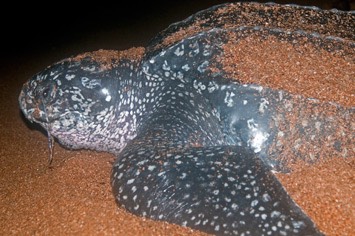
As soon as the turtle
started laying her eggs, Arnold lifted them carefully out of the hole and
placed them in a big bucket. The turtle didn’t notice this at all, and also
wasn’t bothered by us coming closer and taking lots of photographs. The eggs
were laid about half a dozen at a time, after which the turtle groaned and
huffed and puffed before gathering all her strength for the next lot. It was a
very humbling experience watching this mighty animal give birth! In the end she
laid about 80 eggs in total, which just fitted into our bucket.
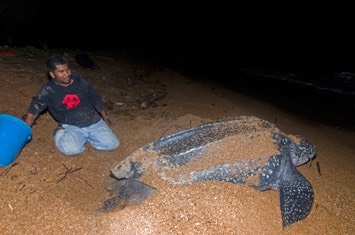
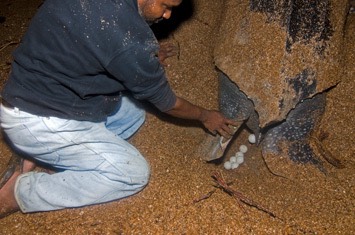
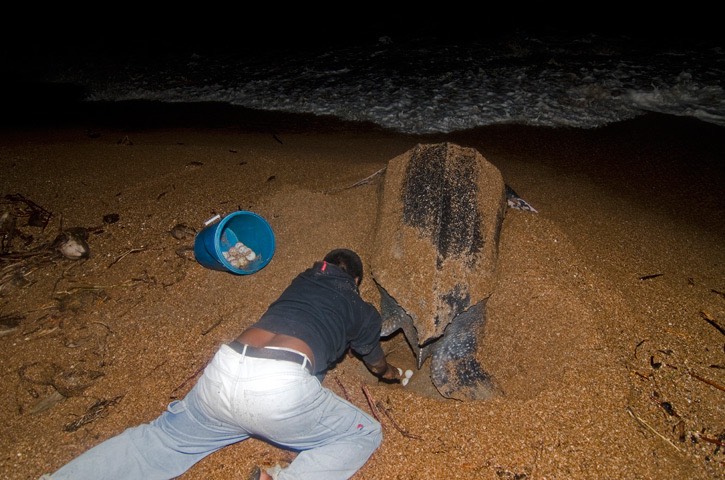
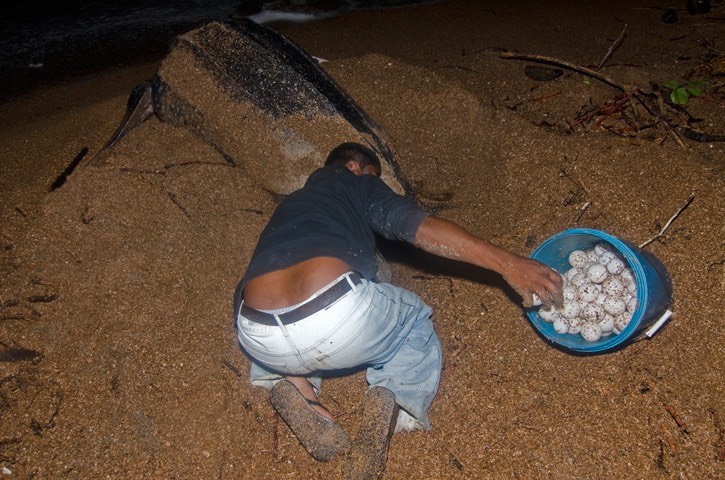
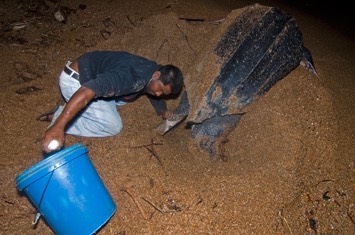
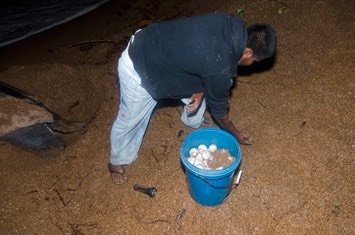
The eggs are very round, a bit bigger than ping-pong balls and the shell is very soft. We felt a bit sorry for the turtle when she went to great lengths to shovel sand over her non-existent clutch of eggs. It actually takes quite a long time and a lot of effort for the turtles to get their nesting site covered up to their satisfaction. After a while we decided to leave her to finish off by herself and headed back to the quad bike with Arnold carrying the precious cargo of turtle eggs.
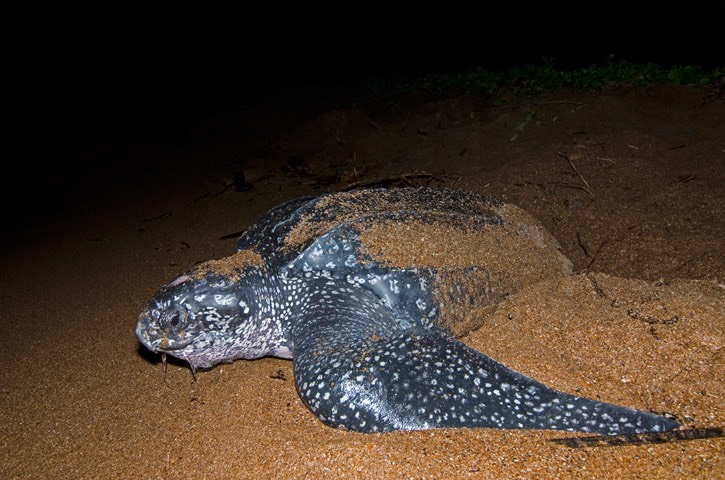
Back at the quad bike we
noticed that there was a second bucket full of eggs. Max must have found a second turtle somewhere along the way. We were just about to head off
when we saw her! Another huge leatherback turtle had laid her eggs right next
to the old fishing boat and was now busy finishing off by scraping the sand
back in place. Max had decided that it was better to remove the eggs, due to the
proximity to the houses of the fishermen. The turtle went round and round,
moving sand from one side to the other.
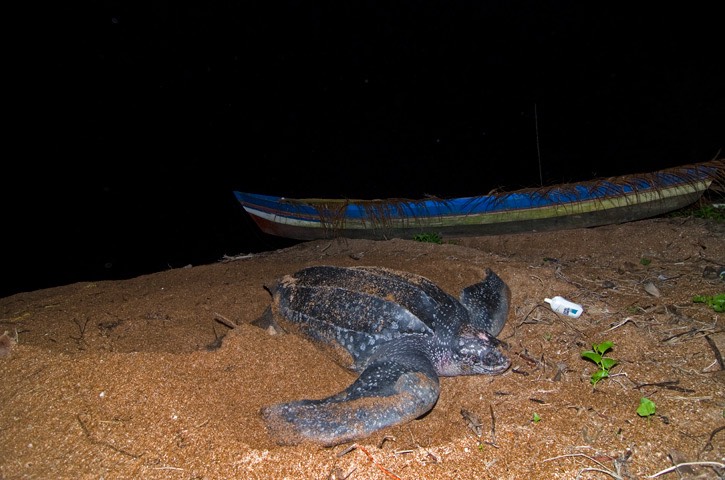
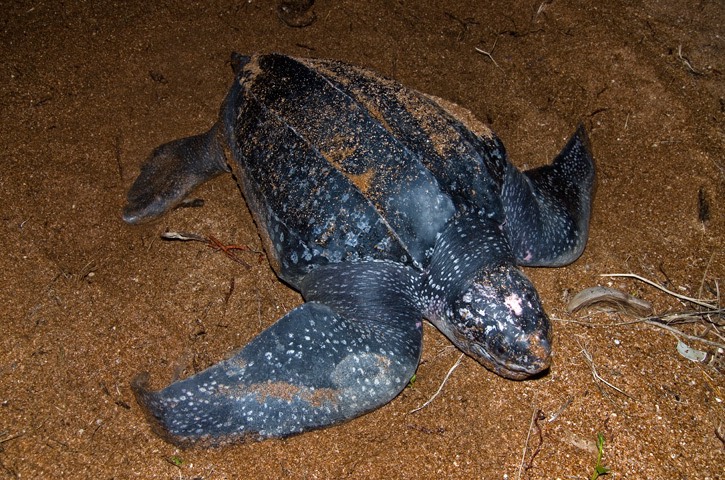
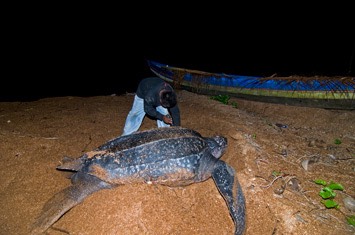
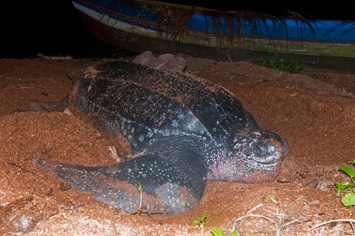
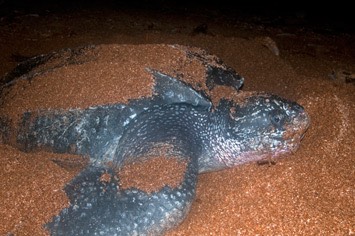
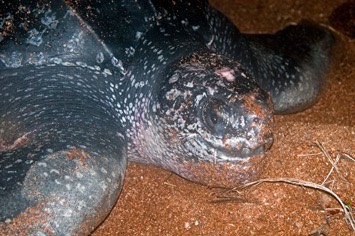
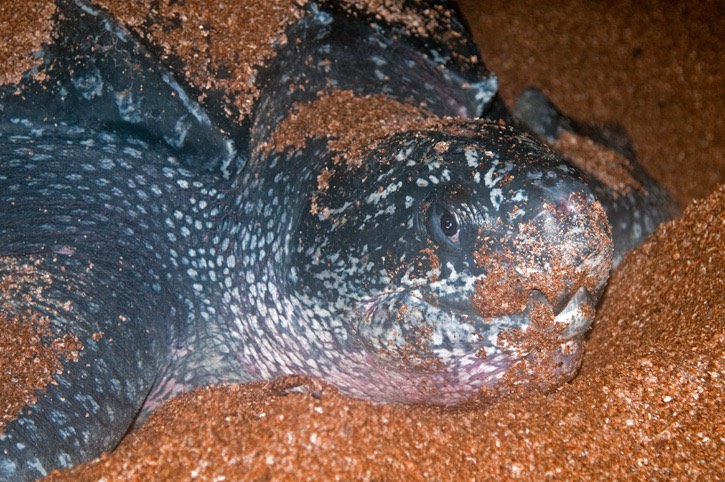
Again, we didn’t wait until
she had finished, as we wanted to get back with our precious cargo of now two
clutches of turtle eggs! Transporting them and all of us safely on the quad bike
was a bit of a challenge! Back near where we had seen the turtle the previous
night, we were alerted by Max’s torch. There was yet another leatherback turtle!
She had only just started to excavate a hole, so we watched her dig and then
start laying the first eggs.
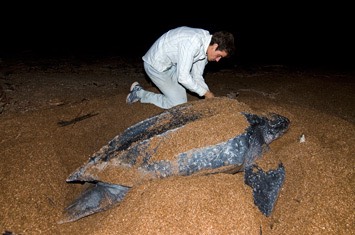
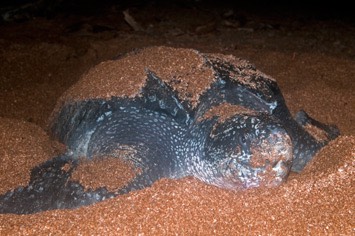


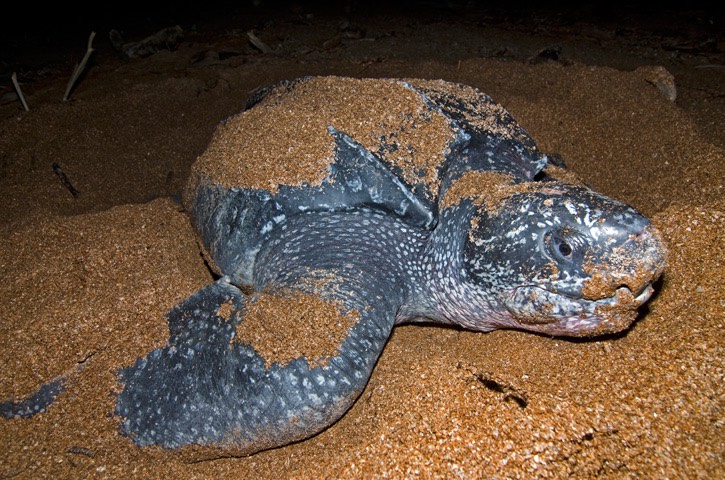
By now it was well past midnight, and we were supposed to set off for Mabaruma shortly after six, so after a little while we decided to head back to the research station, as this turtle had chosen a better place and her eggs did not need collecting. As it was so late, Max climbed on board the quad bike, and we headed back ever so slowly. It was around 2 o’clock when we arrived at the camp, so we left Max and Arnold to bury the two clutches in the hatchery, while we fell into bed. Before leaving we had arranged the mosquito net somewhat better, and after killing about a dozen mosquitoes that had sneaked in together with us, we even had a few reasonably peaceful hours of sleep.
Friday, 29/06/2012: Shell Beach – Georgetown
By the time we got up for breakfast, Audley had already heard about our adventures during the night. He was very pleased that we had managed to see four leatherback turtles during our two days stay. We were also very happy and, although it would have been nice to see some of the other species, we considered ourselves lucky to have seen so much, especially so close to the end of the nesting season. It really is a privilege to be able to sit right next to a turtle nearly as long as Maren is tall, and watch her lay her eggs. It’s quite amazing to think that tiny little turtles will hatch out of those eggs, and, thanks to the guys working at Shell Beach, quite a few should at least make it safely to the sea. There they face many dangers, both natural and man-made and only a very small proportion survive to adulthood.
After breakfast all available manpower was summoned to move the boat back down the beach and into the water. They used wooden poles as rollers, but it was still quite a lot of work getting the boat afloat again. After saying our good-byes, we were off again, heading towards Mabaruma.
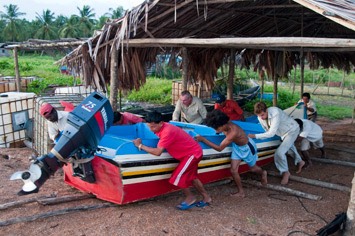
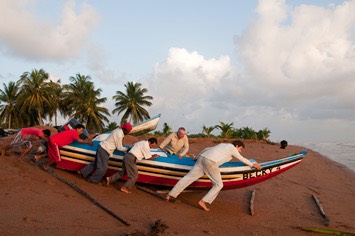
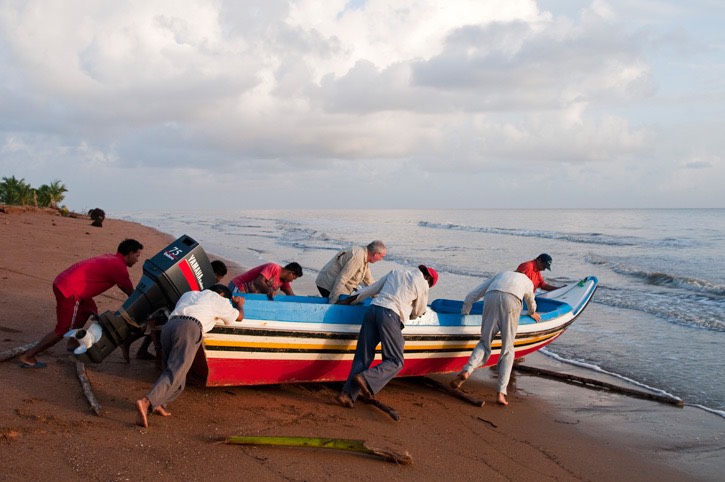
Fortunately, the sea was
calm and we made good progress. This time there was no sign of the fuel
smugglers’ boat, but we saw a few more scarlet ibis.
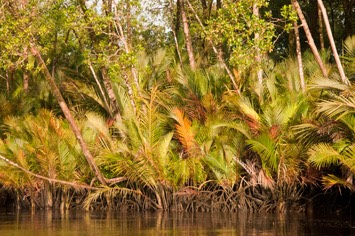
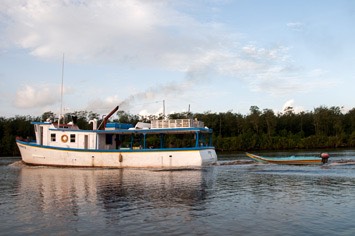
When we arrived the water was so low that it was quite a challenge to climb back up onto the little landing. We somehow managed and Steve was waiting in his car for us again and took Audley and ourselves straight to the little airstrip. We checked in and paid for our extra luggage and waited for our little aircraft to arrive. Meanwhile, we watched a plane from a different company arrive and depart.
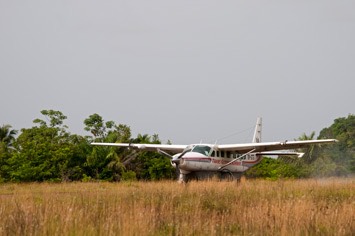
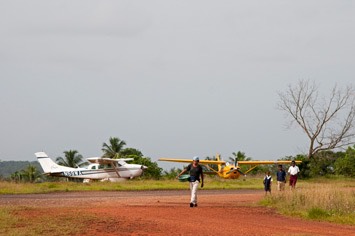
Maren even managed to find a little long-drop toilet before our Trans Guyana flight arrived. We bade farewell to Audley and boarded the plane first, so we got the seats directly behind the pilots again. The flight back was quiet and we enjoyed the endless views of the rainforest before descending over Georgetown and the Demerara River.
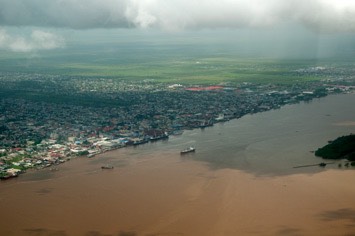
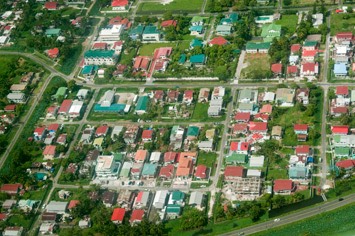
We arrived back in Georgetown before lunch, where Dennis picked us up and took us back to Cara Lodge. After a chat with the receptionist, we moved back into our same room. After a shower we discovered that the air-condition unit had developed a leak, so we ended up packing our things up again and moving into the room next door. We then had lunch in the courtyard. In the afternoon we took it easy, enjoying hot showers, a siesta, surfing the internet and generally not doing all that much. We had a lovely dinner in the restaurant and an early night, as we would be picked up again early the next morning.